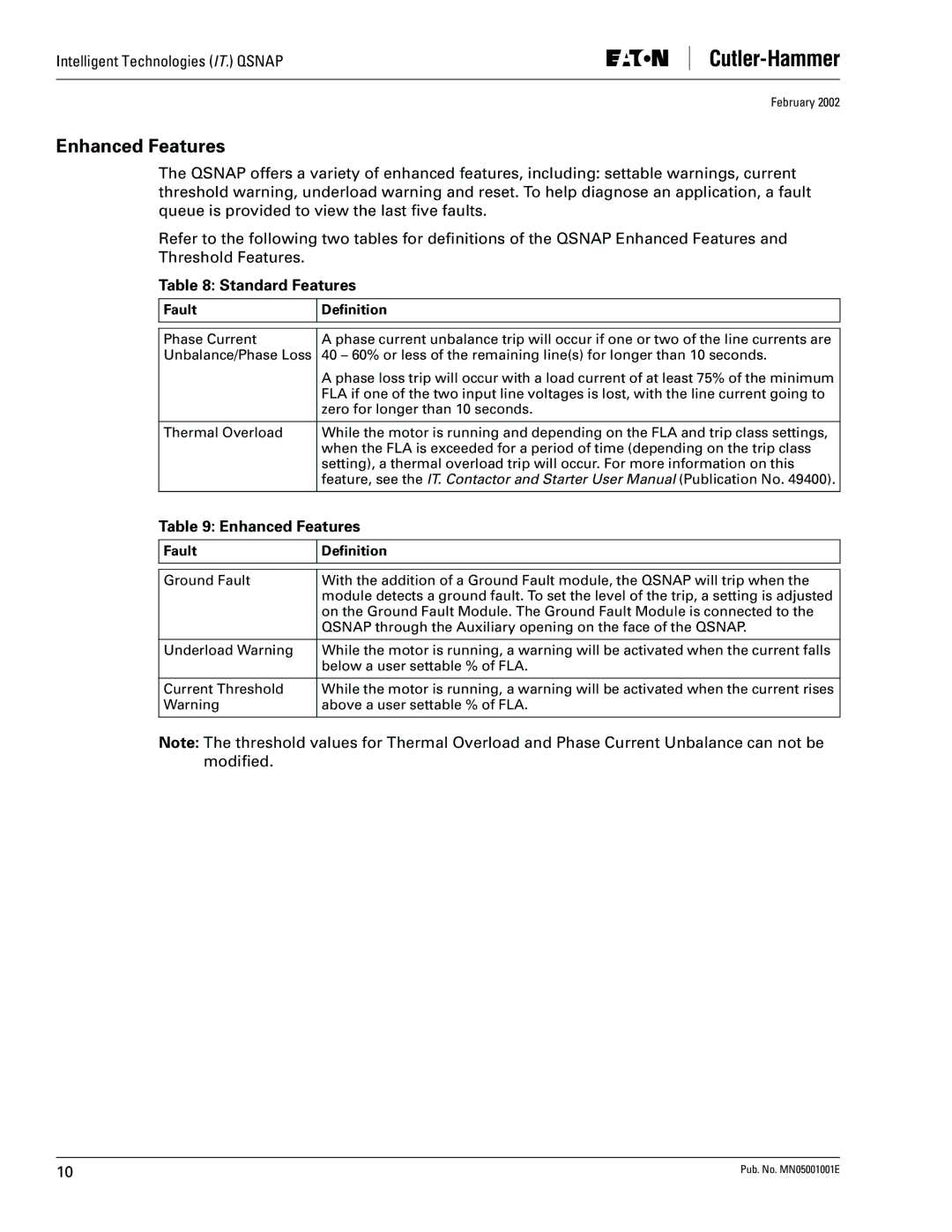
Intelligent Technologies (IT.) QSNAP
February 2002
Enhanced Features
The QSNAP offers a variety of enhanced features, including: settable warnings, current threshold warning, underload warning and reset. To help diagnose an application, a fault queue is provided to view the last five faults.
Refer to the following two tables for definitions of the QSNAP Enhanced Features and Threshold Features.
Table 8: Standard Features
Fault
Definition
Phase Current | A phase current unbalance trip will occur if one or two of the line currents are |
Unbalance/Phase Loss | 40 – 60% or less of the remaining line(s) for longer than 10 seconds. |
| A phase loss trip will occur with a load current of at least 75% of the minimum |
| FLA if one of the two input line voltages is lost, with the line current going to |
| zero for longer than 10 seconds. |
|
|
Thermal Overload | While the motor is running and depending on the FLA and trip class settings, |
| when the FLA is exceeded for a period of time (depending on the trip class |
| setting), a thermal overload trip will occur. For more information on this |
| feature, see the IT. Contactor and Starter User Manual (Publication No. 49400). |
|
|
Table 9: Enhanced Features
Fault
Definition
Ground Fault | With the addition of a Ground Fault module, the QSNAP will trip when the |
| module detects a ground fault. To set the level of the trip, a setting is adjusted |
| on the Ground Fault Module. The Ground Fault Module is connected to the |
| QSNAP through the Auxiliary opening on the face of the QSNAP. |
|
|
Underload Warning | While the motor is running, a warning will be activated when the current falls |
| below a user settable % of FLA. |
|
|
Current Threshold | While the motor is running, a warning will be activated when the current rises |
Warning | above a user settable % of FLA. |
|
|
Note: The threshold values for Thermal Overload and Phase Current Unbalance can not be modified.
10 | Pub. No. MN05001001E |
